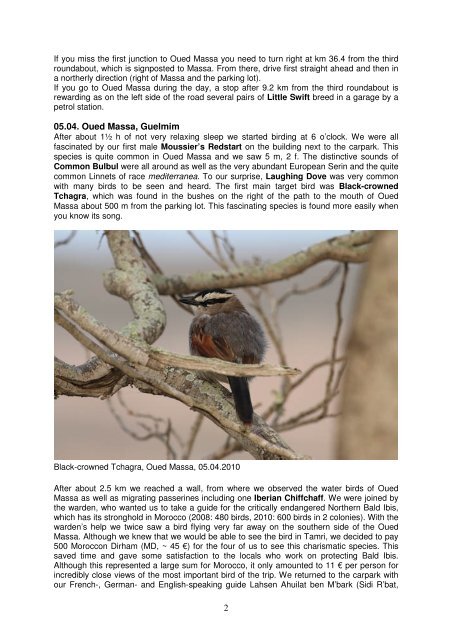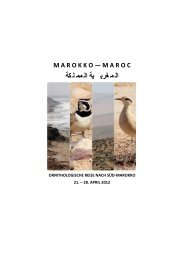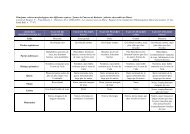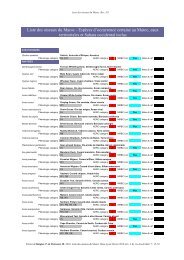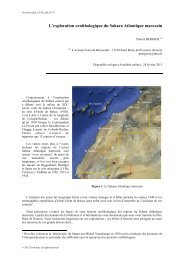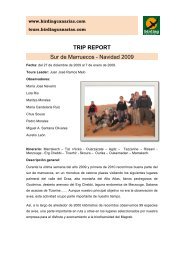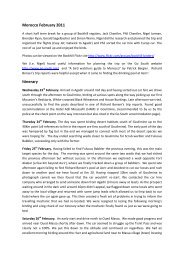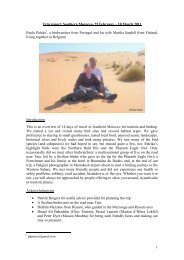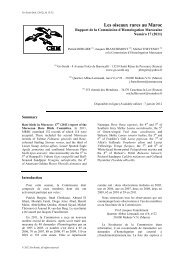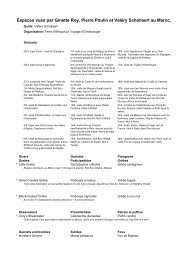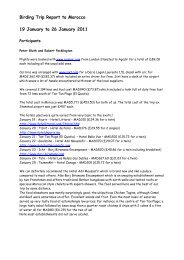Fiche de renseignements - Go-South
Fiche de renseignements - Go-South
Fiche de renseignements - Go-South
You also want an ePaper? Increase the reach of your titles
YUMPU automatically turns print PDFs into web optimized ePapers that Google loves.
If you miss the first junction to Oued Massa you need to turn right at km 36.4 from the third<br />
roundabout, which is signposted to Massa. From there, drive first straight ahead and then in<br />
a northerly direction (right of Massa and the parking lot).<br />
If you go to Oued Massa during the day, a stop after 9.2 km from the third roundabout is<br />
rewarding as on the left si<strong>de</strong> of the road several pairs of Little Swift breed in a garage by a<br />
petrol station.<br />
05.04. Oued Massa, Guelmim<br />
After about 1½ h of not very relaxing sleep we started birding at 6 o’clock. We were all<br />
fascinated by our first male Moussier’s Redstart on the building next to the carpark. This<br />
species is quite common in Oued Massa and we saw 5 m, 2 f. The distinctive sounds of<br />
Common Bulbul were all around as well as the very abundant European Serin and the quite<br />
common Linnets of race mediterranea. To our surprise, Laughing Dove was very common<br />
with many birds to be seen and heard. The first main target bird was Black-crowned<br />
Tchagra, which was found in the bushes on the right of the path to the mouth of Oued<br />
Massa about 500 m from the parking lot. This fascinating species is found more easily when<br />
you know its song.<br />
Black-crowned Tchagra, Oued Massa, 05.04.2010<br />
After about 2.5 km we reached a wall, from where we observed the water birds of Oued<br />
Massa as well as migrating passerines including one Iberian Chiffchaff. We were joined by<br />
the war<strong>de</strong>n, who wanted us to take a gui<strong>de</strong> for the critically endangered Northern Bald Ibis,<br />
which has its stronghold in Morocco (2008: 480 birds, 2010: 600 birds in 2 colonies). With the<br />
war<strong>de</strong>n’s help we twice saw a bird flying very far away on the southern si<strong>de</strong> of the Oued<br />
Massa. Although we knew that we would be able to see the bird in Tamri, we <strong>de</strong>ci<strong>de</strong>d to pay<br />
500 Moroccon Dirham (MD, ~ 45 €) for the four of us to see this charismatic species. This<br />
saved time and gave some satisfaction to the locals who work on protecting Bald Ibis.<br />
Although this represented a large sum for Morocco, it only amounted to 11 € per person for<br />
incredibly close views of the most important bird of the trip. We returned to the carpark with<br />
our French-, German- and English-speaking gui<strong>de</strong> Lahsen Ahuilat ben M’bark (Sidi R’bat,<br />
2


